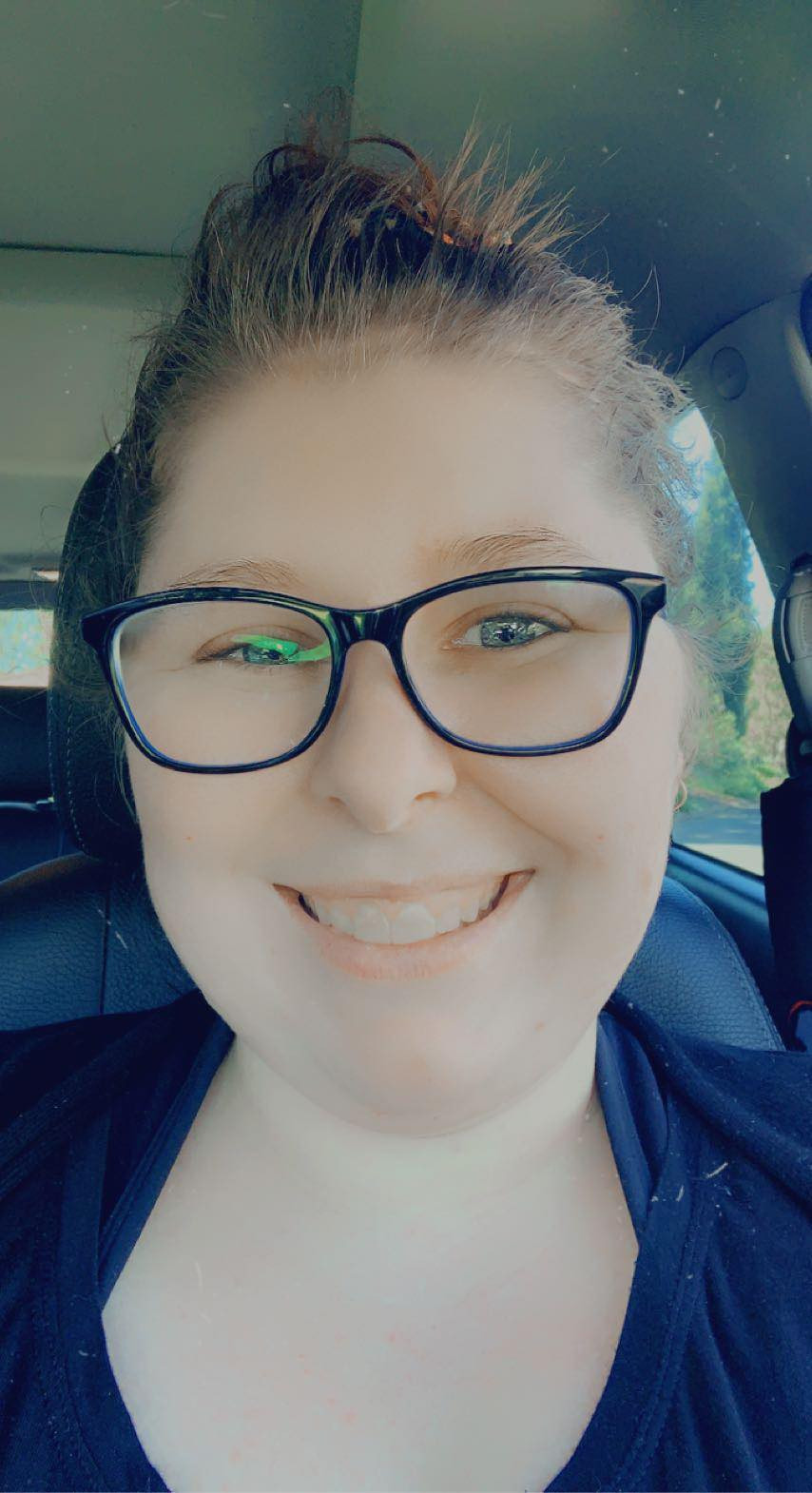Casey's Story
Casey was diagnosed with an epidermoid brain tumour the size of an egg on her brain stem in 2020
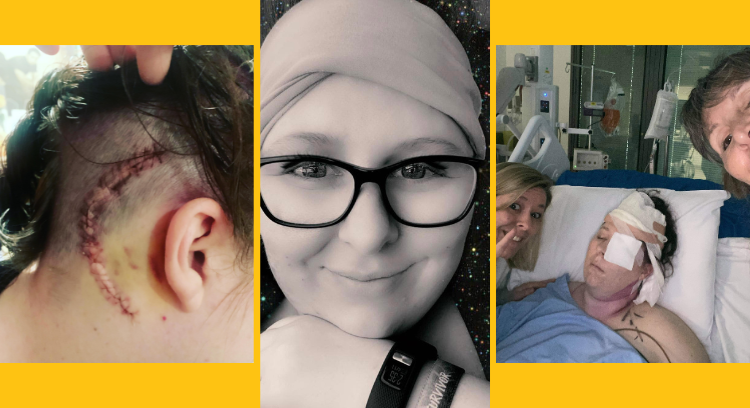
For some time before she was diagnosed Casey was experiencing progressively worsening daily headaches and migraines, neck, back and jaw pain, with some facial sensitivities. Regular physio, dental and chiro visits did little to help, but her symptoms were initially chalked up to the busy life of a working mum, stress, and potentially nerve damage from jaw surgery as a child. Some days would be more draining or painful than others.
It wasn’t until she began experiencing worsening tinnitus that a referral by her doctor to an audiologist, followed up by an ENT, led to her diagnosis. Initially thought to be Eustachian Tube Dysfunction, treatment made no improvement, so Casey was sent for a head MRI with contrast. After her scan, Casey received a referral in the mail to see a neurosurgeon for her MRI results. No other information was given at that point in time and her mind raced thinking what it could mean. There was a total of 42 days between the first MRI and face to face consultation for results.
“The first thought that came into my mind was, “what’s the bet I have a brain tumour?”, but everyone around me was convinced it couldn’t be that, so I went to the appointment alone thinking it’s just something wrong with my ears. I remember the doctor saying, ‘we found a tumour on your brainstem, it’s about the size of an egg’, and then that’s all I remember from that appointment. Trying to remain calm and contain my shock as I sat there crying, I was not ok. At that point, all I wanted was my mum. I sent her a text message before driving home saying “I need a hug”. She met me at my car as I pulled up home, and I fell into her arms crying, trying to find the words to explain what little I remembered from the appointment.”
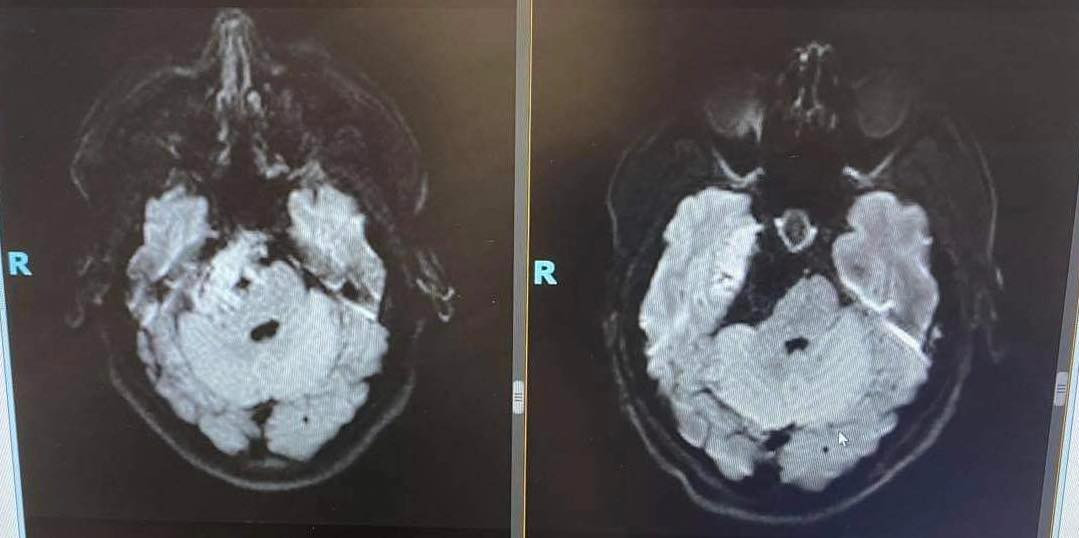
(image on the left is the before 2020 – image on the right is the after 2021)
An epidermoid tumour is a benign slow growing tumour that is most likely present since birth, and accounts for only 1-2% of all intracranial tumours.
In January 2021, Casey was informed that she would require two surgeries to remove the tumour because of its size and location. At that time, Casey was living with her mum and dad, her husband, and their two young boys, while saving to buy their first home. Unfortunately, their relationship deteriorated in the months that followed and Casey had to navigate the stress of separation, family court matters and divorce, the death of her grandpa, while simultaneously undergoing multiple brain surgeries with the unforeseen complications, recovery and trying to maintain a sense of normality for her boys.
“I went into black ops mode for my kids. I was open with them with any questions they had, but my main concern was that they were able to continue living as normally as possible without being consumed by worry about everything that was going on. There were so many things to organise and prepare for just in case. On top of it all, I didn’t have a will or enduring power of attorney or anything like that, so this was the catalyst I needed to get that organised (even if you don’t have health concerns, get that stuff sorted, it's important). The night before my first surgery, I watched over my sons because I honestly didn’t think I would survive or even just get back to normal. I was so scared at that point. The following day of surgery, I handed my mum my phone, and my life, for the next three months! (Which really totalled 6 months, as after each surgery the clock of 3 months started again).”
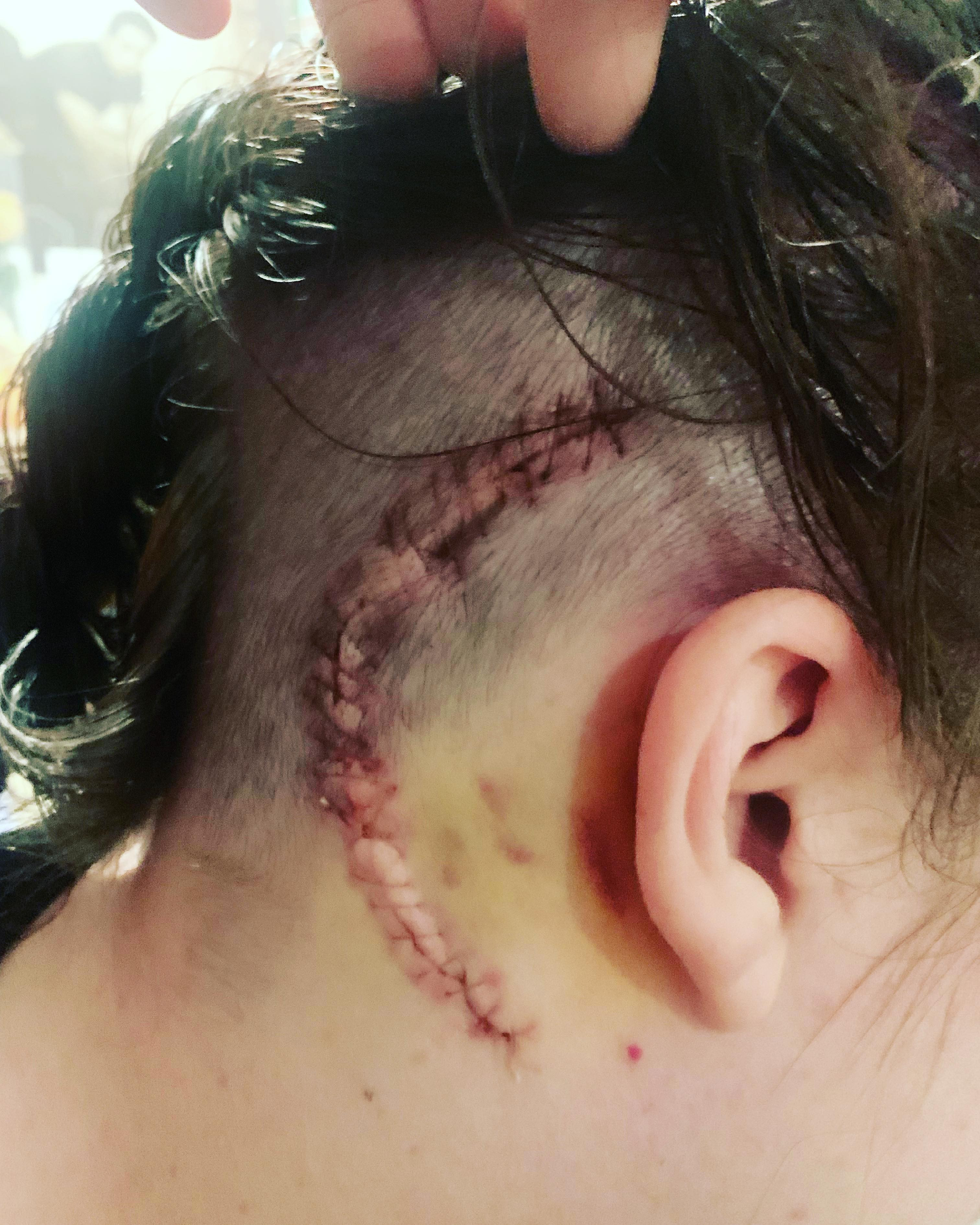
In the lead up to Casey's first surgery, many tests were performed – blood tests, stealth MRI and CT scan on her brain, followed by the shaving of some hair to add fiducials to mark out surgery points the day before surgery. Casey’s first surgery was June 10th, 2021, a large crescent shape incision was made behind her right ear to remove the bulk of the tumour. Postoperatively she experienced blurry vision, slight headaches and light sensitivity requiring her to wear an eyepatch and remain in a darkened room as much as possible. Sixteen days later, she “sprung a leak” from her incision, which was confirmed to be a cerebrospinal fluid leak. This resulted in a trip to the ER to rule out meningitis and additional stitches to close the hole. She went through multiple lumbar punctures while in the ER, proving unsuccessful. An MRI guided lumbar puncture the following day was thankfully successful. It then turned into a six day wait in hospital for petri dish samples to confirm no infection.
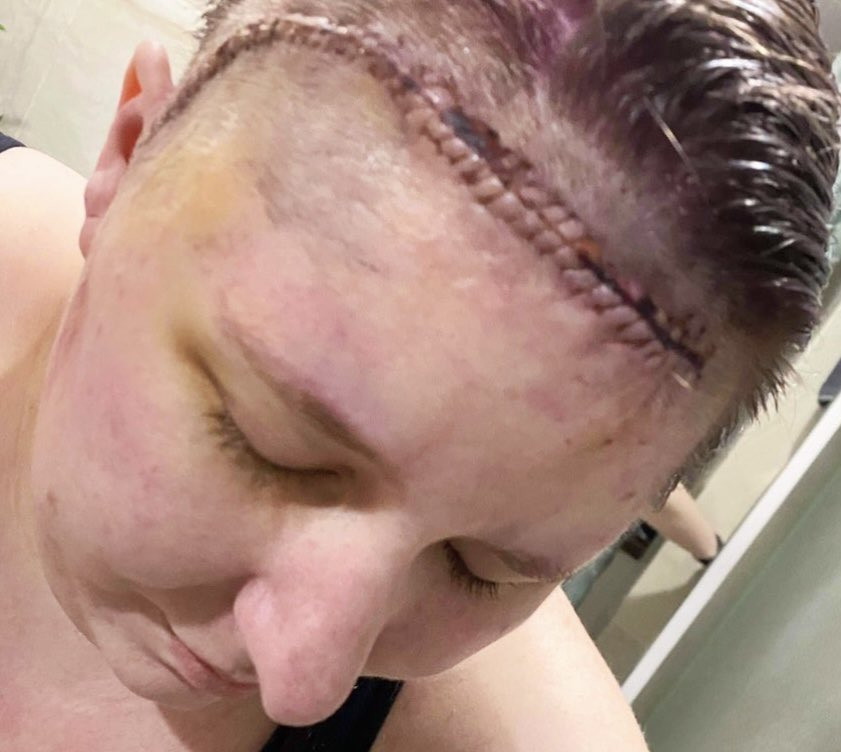
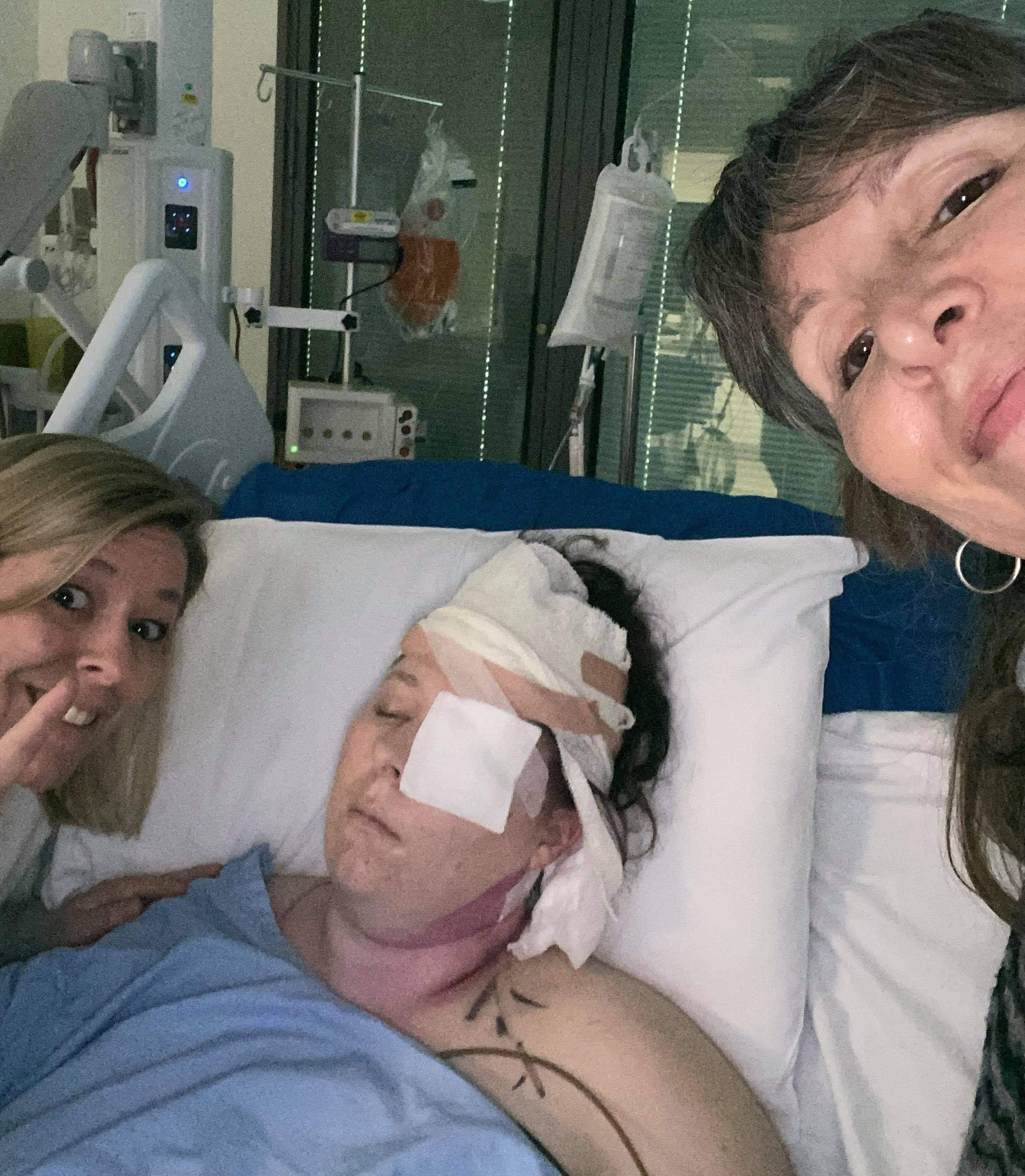
Exactly 4 weeks after the first surgery, on July 8th, Casey underwent her second operation to remove the remainder of the tumour. Casey was still recovering from her first open skull surgery which only removed a large portion of the tumour, and then had to go through all the uncertainty of another open skull surgery, this time to remove the remaining part of the tumour. This was a huge surgery lasting 5+ hours, cutting right across the front of her forehead. Eight days later during her recovery at home, Casey collapsed on the floor of the bathroom. Her family was home at the time and all efforts were made to get a reading on the blood pressure monitor without success while waiting for the ambulance “luckily, the floor was clean and somewhat cold, so I wasn’t in a rush to get up and potentially make things worse!”. They watched as the paramedics secured her in the ambulance and rushed her to hospital, to be diagnosed with saddle pulmonary embolisms to both lungs. It was a matter of life and death for the first three days in ICU until the doctors worked out the appropriate dosages of medication to help the clots while also preventing a potential brain bleed. Movement by Casey was limited to prevent any movement of the clots. An arterial line was put in for easy access for multiple blood draws to assess clotting factors. At this point, she was fed up, feeling like a pin cushion, and just over getting “stabbed” with needles.
“My mum and sister visited me the next day. The doctors and nurses played it down so I wouldn’t get too stressed, so I didn’t realise how serious it was at the time. It wasn't until weeks later in my recovery that my mum told me I was classed as “critical”, the clots had gone through my heart and lodged into my lungs, and she drove home in tears that night because it was so touch and go and she thought I was going to die. I stayed in the RAH ICU for 5 days, with monitoring every few hours and a whole raft of tests and scans (echocardiogram and x-ray to name a few). I was put on Clexane blood thinners via injection for a week, with home nurses coming to help administer and then Apixaban tablets for three and a half months.”
Casey’s second surgery was just a few days after her youngest son’s 9th birthday. In recovery and unable to leave the house, she made sure there was a special chocolate delivery to the house and an ice cream cake to celebrate. Throughout her complicated recovery, Casey’s focus was always the wellbeing of her boys.
21 days after her second surgery, she was able to obtain special prism glasses to reduce double vision, as well as attending a couple physiotherapy appointments to regain her strength and balance.
Approximately four months after the second surgery, driving home with her mum from an appointment at the RAH, Casey received a phone call from the specialist saying there was no evidence of any tumour. “Happy Day! We sat on the side of the road on the way home with happy tears.”
About four and a half months after the second surgery, Casey was back at work. Small hours, but back to normal duties after a week of short shifts. She wanted to be back at work before Christmas, as she loved the festive period and the happiness it brought. Casey managed to get back to work a couple weeks into November, just in time for the decorations to go up around the shopping centres.
“Having to take care of others, having small personal goals, and organising things for my kids was a welcome distraction, because when everyone went to bed and I was alone, it got dark. My friends, my work friends and my family will never really understand just how much their support, patience and kindness meant to me in my recovery. Coming over and checking up on me, cooking meals and dropping things off for me and the boys. Unexpected flower/chocolate deliveries, finding/making new eye patches, having a small get together for my 30th birthday at home. I will never forget it.
I was on various medications that kept me awake when everyone else was sleeping. It was one of the hardest things I have ever done, but I am proud, because I am still here and because of them, I had the courage to fight.
Initially in recovery, with the help of a health tracking chart, Mum showered me, dressed me, cleaned my wound, checked for abnormalities/changes, rebandaged my head, cooked for me, gave me my medication, made sure I drank, kept me doing rehab using a walker each day (yes, one of those ones with a seat and wheels. Did I ever think I would need to use one of those at aged 29, no, but it helped, so don’t judge! ☺), helped organise my sons, checked my emails etc. Keeping occupied got me out of some really dark situations, something as simple as making my sons breakfast and keeping to routine helped not only them, but me as well. Photos that were taken by my mum I would print out and journalise in my brain folder. I also decided to make a stew one day in my recovery, because I hated sitting around doing nothing. (thank goodness for online shopping deliveries, they made life simpler in these harder than normal times, they made sure bags were light as I wrote comments in the delivery notes “recovering from surgery don’t pack too heavy”). Mum told me off because I was cutting raw meat up for the stew, and she was worried about me cutting myself while on blood thinners, I was then required to use a knife and a fork - she told me on numerous occasions she wanted to wrap me in bubble wrap. I even accidentally bumped my head on the fridge one night and she came in jokingly with a bubble wrap hat ☺ I am so grateful for the support of my family and friends, particularly my mum and my sister.”
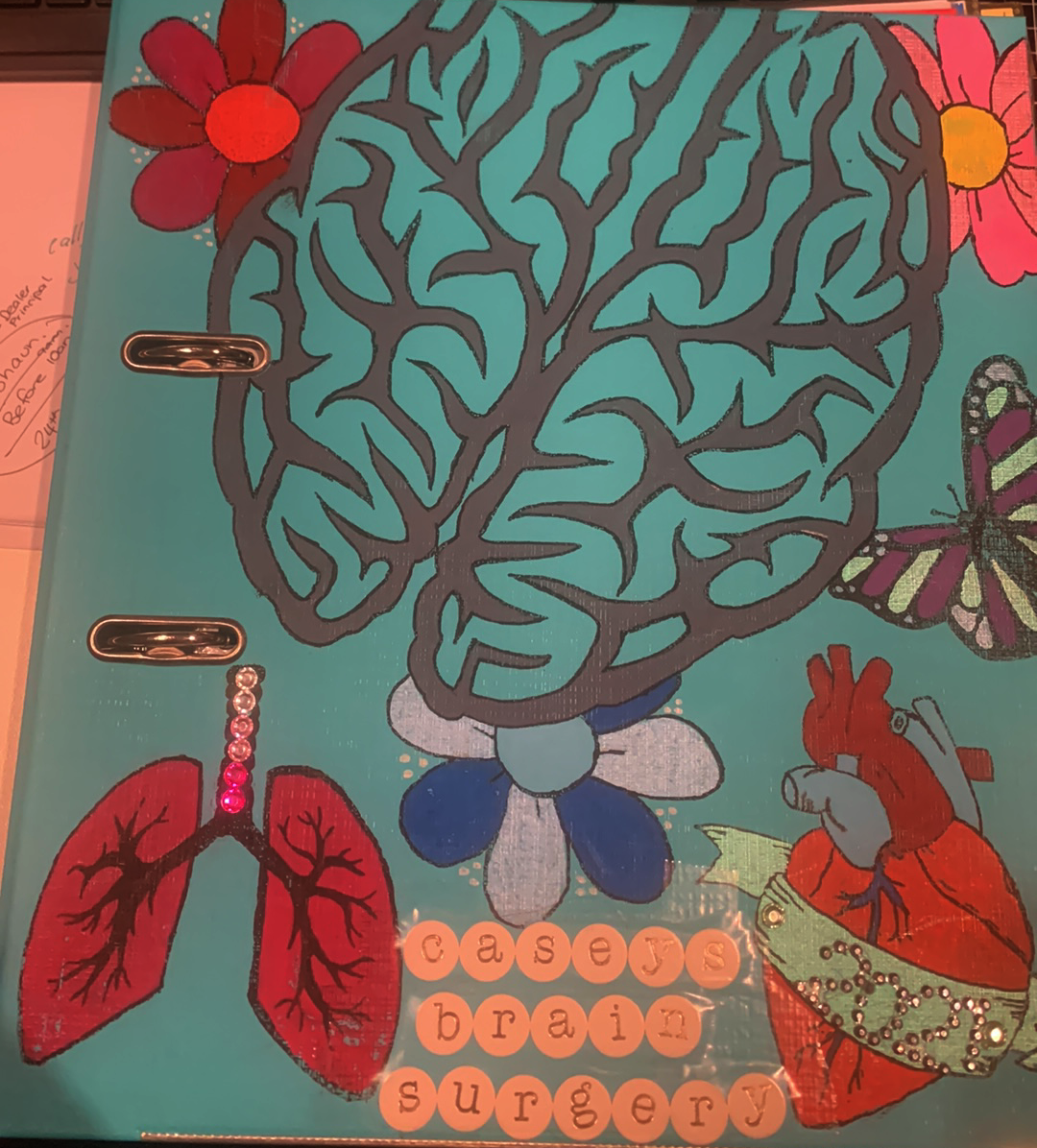
Despite her complications, Casey has now made a full recovery. She says the experience has given her a new perspective on what is important in life, and it encourages her to not let anything hold her back. Incredibly, just months after being discharged from hospital after two brain surgeries, a CSF leak, as well as surviving the worst of the pulmonary embolisms, three and a half months later she was able to join her family on the Adelaide Oval rooftop climb to celebrate her mum’s birthday (despite a fear of heights!).
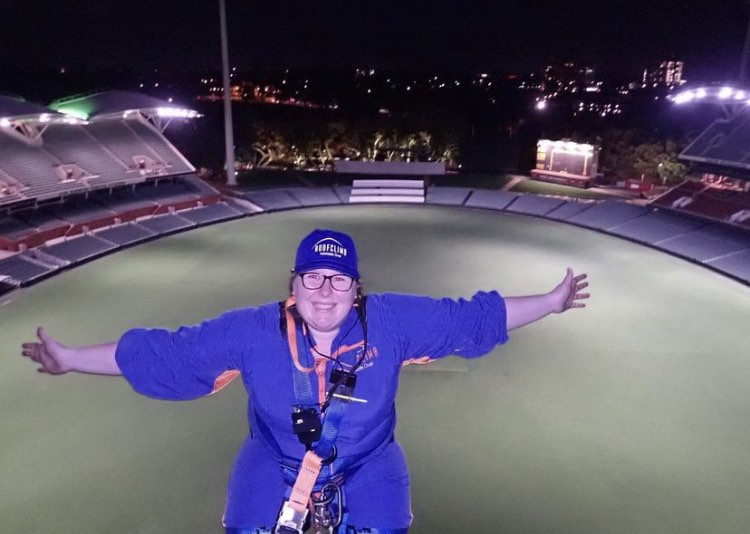
Casey is sharing her story in the hope that it can help others facing a similar situation. Even though the surgeries were stressful and scary, it has made Casey stronger and wanting to do more with her life. She also recommends that anyone embarking on their own brain tumour journey reach out to the Adelaide Brain Tumour Support Group.
“Shortly after I got the all clear from my surgeries, my Mum was diagnosed with Multiple Myeloma. I saw how much her support group helped her and made her feel not alone and able to cope better, so I looked into brain tumour support groups within Adelaide. I thought all the support groups for brain surgeries were located in the USA. I was so anxious going to the first group, but there was such a range of age groups and it was just so nice listening to other stories and telling them of mine. Everyone's experience is similar but different. They have had lab tours, coffee catch ups and monthly catch ups. I definitely recommend if anyone is going through a “same but different” situation to seek support groups for their own major health diagnosis. Something as little as a coffee catch up, can help so much.
I still experience constant tinnitus and have permanent hearing loss in one ear. You also do live with a bit of PTSD after surgery, it’s hard not to fear the worst if something feels off. Is it just a headache or is the tumour back? Is that just a pain in my chest or is it another pulmonary embolism? I just have to remind myself that I’ve been given the all clear and you live life the best you can. It also made me realise you have to push to advocate for yourself when you know something is not quite right. I was probably experiencing my symptoms for 10 years. Daily headaches/migraines and chronic pain are not normal, but when you’re not taken seriously, you start to feel like you’re going crazy. You really have to listen to your own body and take care of yourself. Now that I have had my operations and my tumour is gone, I might experience headaches once a month if that. My constant body pain is non-existent, it has honestly completely changed my quality of life for the better.
I will forever be grateful to all the people involved in my journey. I’m so grateful to my team of doctors and specialists who sent me for that first MRI, because otherwise I don’t think it would have been found. The surgeons, doctors, nurses, paramedics, anaesthesiologist, medical imaging specialists, ward transfer/hospitality staff within and outside the Royal Adelaide Hospital that made this such a successful outcome. There are so many of you, thank you” My life goes on now without pain and discomfort!” ♡
